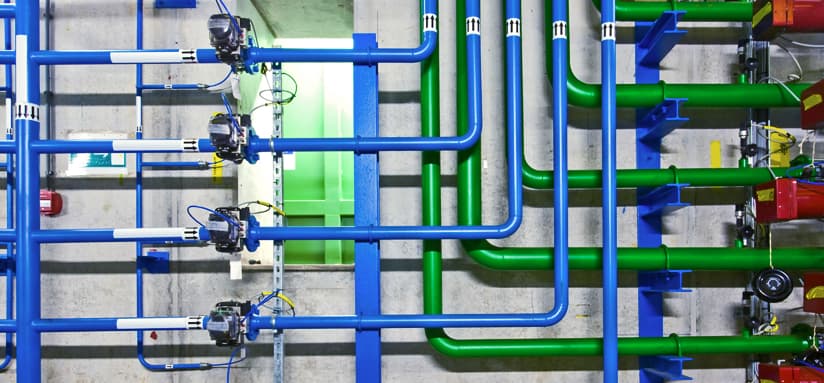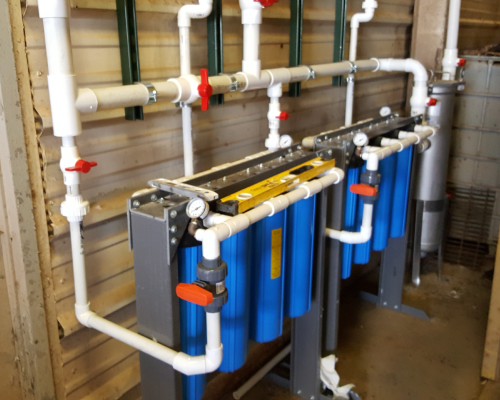Understanding The Layout of Your Property's Plumbing System
Understanding The Layout of Your Property's Plumbing System
Blog Article
Any individual maintains their personal conception involving Exploring Your Homes Plumbing Anatomy.

Understanding how your home's plumbing system works is vital for every single home owner. From supplying tidy water for alcohol consumption, food preparation, and bathing to securely getting rid of wastewater, a well-kept pipes system is essential for your family members's health and convenience. In this thorough guide, we'll check out the complex network that makes up your home's plumbing and deal ideas on upkeep, upgrades, and dealing with common problems.
Intro
Your home's plumbing system is greater than simply a network of pipes; it's a complex system that ensures you have accessibility to clean water and effective wastewater elimination. Knowing its elements and just how they collaborate can aid you avoid expensive repairs and guarantee whatever runs smoothly.
Basic Elements of a Pipes System
Pipes and Tubing
At the heart of your plumbing system are the pipelines and tubing that lug water throughout your home. These can be made from numerous materials such as copper, PVC, or PEX, each with its benefits in regards to durability and cost-effectiveness.
Fixtures: Sinks, Toilets, Showers, etc.
Fixtures like sinks, commodes, showers, and bath tubs are where water is used in your home. Understanding exactly how these fixtures connect to the plumbing system helps in identifying issues and planning upgrades.
Shutoffs and Shut-off Points
Shutoffs control the flow of water in your pipes system. Shut-off shutoffs are essential during emergency situations or when you require to make repairs, enabling you to isolate parts of the system without disrupting water flow to the entire home.
Supply Of Water System
Main Water Line
The primary water line links your home to the local supply of water or a private well. It's where water enters your home and is distributed to numerous components.
Water Meter and Pressure Regulator
The water meter measures your water use, while a stress regulatory authority makes certain that water flows at a safe stress throughout your home's pipes system, protecting against damages to pipes and fixtures.
Cold Water vs. Warm water Lines
Comprehending the difference between cold water lines, which provide water straight from the primary, and warm water lines, which bring heated water from the hot water heater, helps in troubleshooting and preparing for upgrades.
Water drainage System
Drain Piping and Traps
Drain pipes carry wastewater far from sinks, showers, and bathrooms to the sewage system or septic tank. Catches stop sewage system gases from entering your home and also catch debris that can cause obstructions.
Air flow Pipes
Ventilation pipes allow air right into the drain system, stopping suction that might slow water drainage and create catches to empty. Proper air flow is essential for maintaining the honesty of your plumbing system.
Importance of Appropriate Water Drainage
Making certain proper water drainage avoids back-ups and water damages. On a regular basis cleaning drains and preserving traps can protect against costly repairs and extend the life of your pipes system.
Water Furnace
Sorts Of Hot Water Heater
Water heaters can be tankless or traditional tank-style. Tankless heating systems warm water on demand, while containers save heated water for prompt usage.
Upgrading Your Pipes System
Reasons for Upgrading
Updating to water-efficient fixtures or changing old pipes can enhance water top quality, minimize water bills, and boost the value of your home.
Modern Plumbing Technologies and Their Advantages
Check out modern technologies like clever leakage detectors, water-saving bathrooms, and energy-efficient water heaters that can save cash and reduce environmental influence.
Cost Considerations and ROI
Compute the upfront expenses versus lasting financial savings when considering pipes upgrades. Many upgrades pay for themselves through minimized energy expenses and fewer fixings.
How Water Heaters Connect to the Plumbing System
Comprehending exactly how hot water heater link to both the cold water supply and hot water distribution lines assists in detecting concerns like insufficient hot water or leaks.
Upkeep Tips for Water Heaters
Regularly flushing your water heater to remove sediment, checking the temperature settings, and examining for leaks can prolong its life expectancy and enhance energy efficiency.
Common Plumbing Problems
Leaks and Their Causes
Leakages can take place as a result of maturing pipes, loosened fittings, or high water pressure. Addressing leaks promptly protects against water damages and mold and mildew development.
Clogs and Clogs
Clogs in drains and commodes are often brought on by purging non-flushable items or a buildup of oil and hair. Utilizing drain screens and bearing in mind what drops your drains pipes can stop blockages.
Signs of Pipes Troubles to Look For
Low water stress, slow-moving drains pipes, foul odors, or unusually high water bills are indicators of prospective plumbing troubles that ought to be attended to quickly.
Pipes Upkeep Tips
Regular Examinations and Checks
Arrange annual pipes examinations to catch concerns early. Try to find signs of leakages, rust, or mineral build-up in taps and showerheads.
DIY Maintenance Tasks
Basic tasks like cleansing faucet aerators, looking for bathroom leakages making use of color tablets, or insulating revealed pipes in cool environments can prevent significant plumbing concerns.
When to Call a Specialist Plumbing Technician
Know when a plumbing problem needs expert expertise. Trying complex fixings without correct knowledge can lead to even more damage and greater repair work costs.
Tips for Reducing Water Usage
Easy routines like taking care of leaks without delay, taking much shorter showers, and running complete tons of washing and dishes can save water and reduced your energy bills.
Eco-Friendly Plumbing Options
Think about sustainable pipes materials like bamboo for flooring, which is durable and eco-friendly, or recycled glass for countertops.
Emergency situation Readiness
Actions to Take Throughout a Pipes Emergency
Know where your shut-off shutoffs lie and exactly how to switch off the water supply in case of a burst pipeline or significant leak.
Significance of Having Emergency Situation Get In Touches With Handy
Maintain get in touch with information for regional plumbers or emergency services readily available for quick feedback during a plumbing crisis.
Ecological Impact and Conservation
Water-Saving Fixtures and Devices
Mounting low-flow faucets, showerheads, and toilets can considerably minimize water use without giving up performance.
Do It Yourself Emergency Situation Fixes (When Relevant).
Temporary fixes like utilizing duct tape to spot a leaking pipeline or positioning a bucket under a dripping faucet can minimize damage till a specialist plumbing professional arrives.
Verdict.
Understanding the makeup of your home's pipes system equips you to keep it properly, conserving money and time on fixings. By adhering to normal maintenance routines and remaining educated regarding modern-day plumbing technologies, you can ensure your pipes system runs effectively for years to find.
HOW YOUR PLUMBING SYSTEM WORKS
Which Pipes Do What?
Blue lines = fresh water supply entering the building Red lines = hot water supply entering the building Grey lines = pipes carrying waste away from the building and venting pipes carrying gases away from the building (through the roof) YOUR MAIN PLUMBING SYSTEMS
There are two main plumbing systems that support your home s basic plumbing needs one that brings clean water into your home, and one that sends dirty water away from your home. Connected to the toilet, bath, shower, and other faucets in your home, these two systems keep your water flowing in the right directions.
ACCESSING FRESH WATER
Fresh and clean water is brought into your home through the main water supply line . Filtered through one pipe, this water is pressured to flow into the various fixtures in your home at any given time.
This water can be sourced from a well located on your property, a pond or river (mostly cottages), or, as in most cases, from the city s municipal water treatment centre. However, it is important to note that water that is untreated, such as the water siphoned from ponds or rivers, may not be safe to drink. Personal water supplies always need to be treated for hardness and contaminants before consumed.
MUNICIPAL WATER SUPPLIES
Improve taste and odour Remove sediment Eliminate hardness Reduce chlorine COLD WATER SUPPLY VS. HOT WATER SUPPLY
Cold water flows into your home or building through the service line, which then distributes hot or cold water to your fixtures. This line is most commonly run through a central column that runs floor to floor. Hot water runs in short and straight pipes as the longer the pipeline, the more heat that will be lost in the transfer. Having shorter pipes also allows residents to access hot water more quickly.
WASTE WATER SYSTEM
Your wastewater system is divided into two parts pipes that send wastewater away from your home and venting pipes that send sewer gas away from your home. Sewage water travels through pipes that flush the water and waste towards local sewers that are operated and managed by your city or town. Most sewer systems rely on gravity to move the wastewater to where it needs to go.
The further away from your toilet or sink, the larger wastewater pipes become. This allows for waste to be disposed of from various parts of your home or business at once without pipe blockages. The angle and flow of these pipes are also essential for keeping your waste pipes clear of build up.
https://harrisplumbing.ca/how-your-home-plumbing-system-works/

We were shown that editorial about Plumbing Installation 101: All You Need to Know through an acquaintance on a different web blog. Remember to take a moment to promote this content if you enjoyed reading it. I recognize the value of reading our article about Exploring Your Homes Plumbing Anatomy.
Details Here Report this page